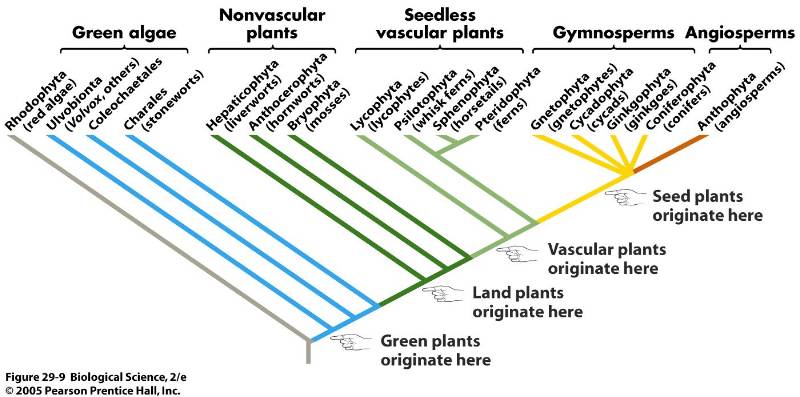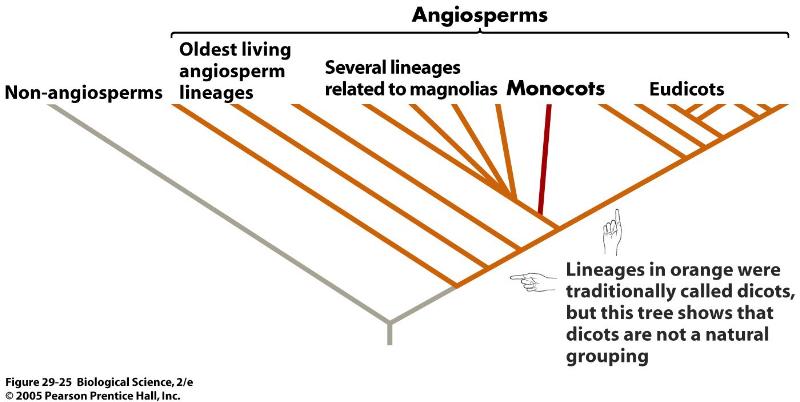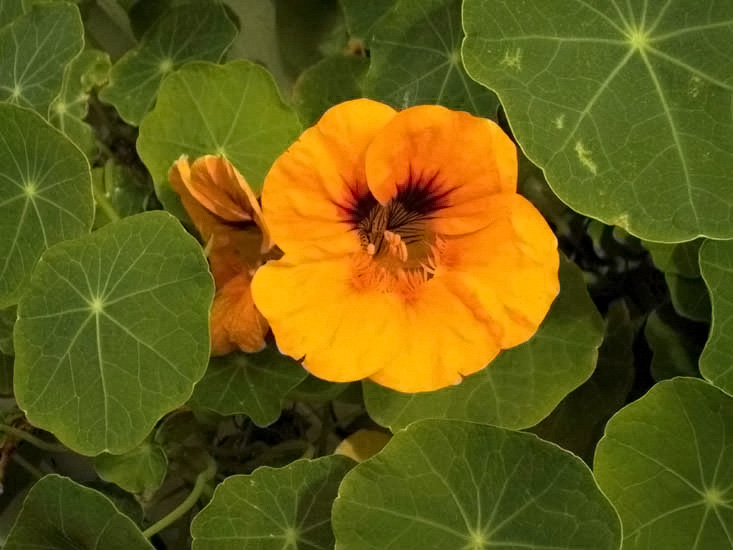
Classification
The English work for Tropaeolum, nasturtium, came from the Latin words nasus (nose) and torqueo (twist). this originated from the reaction of people when they tasted the plants peppery bittersweet taste. The scientific name, Tropaeolum, was actually given by Carl Linnaeus, named the "father of taxonomy." The Latin word for tropaeolum is trophy. Linnaeus settled on this description because he believe that the trophy-like flowers and flat leaves of nasturtium reminded him of battle helmets and shields. Traditionally, in the eighteen hundreds, battle helmets and shields were hung on trees after a victorious army came home from battle.
Domain Eukarya
Kingdom Plantae
Phylum Anthophyta
Class Magnoliopsida
Order Geraniales
Family Tropaeolaceae
Genus Tropaeolum
There are over 80 different types of species of Tropaeolum. This site focuses on the broad spectrum of nasturtium.
Domain Eukarya
All organisms are split up into three domains: archaebacteria, bacteria, and eukarya. The first two domains are grouped together by their shared characteristic of having prokaryotic cells. The eukarya domain is reserved for organisms that possess eukaryotic cells. Nasturtium is made up of these cells and therefore is grouped into the domain eukarya.
Kingdom Plantae
The domain eukarya is then broken down into four divisions, or kingdoms. The kingdom plantae is further categorized by its cell structure. The cells in this kingdom are formed into tissues. The kingdom animalia also contains tissues however, a main cellular difference between the plantae and animalia kingdoms is that the cells in the kingdom plantae contain cell walls. The phylogenetic tree below depicts the kingdom plantae and how it is separated. A few examples of organisms from other kingdoms can be found through these links: Animalia - snow crab; Fungi - Laccaria bicolor.

Phylum Anthophyta
In the kingdom plantae, phyla are grouped together based on whether or not they are nonvascular plants or vascular plants. The vascular plants are then broken up depending on whether or not they contain seeds. From here the plant is place in either the gymnosperm (non-flowering plant) group or the angiosperm (flowering plant) group. Nasturtium is a vascular, seeded, flowering plant, therefore it is placed in the phylum anthophyta.
Class Magnoliopsida
Organisms in the class magnoliopsida are Eudicotyledone or eudicot for short. Eudicots are characterized by having two cotyledons: flower parts that grow in groups of four or five, and leaves with web-like venation. Magnoliids also typically have cells that contain oil and the carpels are commonly arranged spirally.

This phylogenetic tree shows the separation of angiosperms and gymnosperms. It goes into further detail to demonstrate the different groups located within the angiosperms. Nasturtium is located in the eudicots branching.
Order Geraniales
The order geraniales is a relatively small order that mainly includes herbs but also includes small shrubs and trees. As nasturtium is an herb, it falls into this category.
Family Tropaeolaceae
The family Tropaeolaceae has many qualifications that need to be met by organisms sharing this classification. A few key qualities that are shared by this family are that the organisms must be herbs, they must contain mustard oil, and they must be edible.
Genus Tropaeolum
The genus Tropaeolum is strictly reserved for only the plant Tropaeolum, commonly known as nasturtium. To learn more about what makes a plant have the qualifications of this genus browse through this site.
